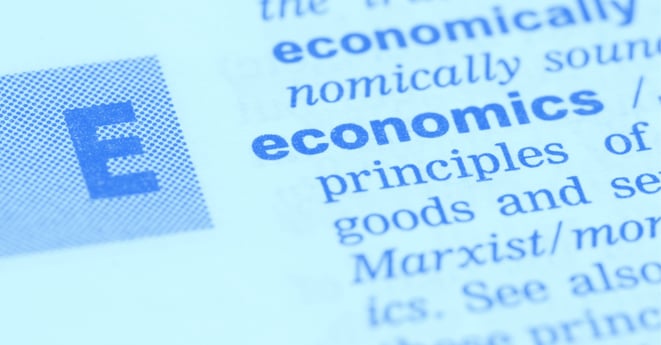If you’d like to know how world events affect the economy, this article is for you. You’ll no longer feel clueless after watching the news or reading an article online. The next time you’re with friends and family, you’ll be able to confidently discuss economics as it relates to the United States and beyond.
Provided in this resource is information on the concept of supply and demand, monetary and fiscal policy, and business cycle theories. Specifically, this article talks about how supply and demand can be shifted, and its price elasticity. Also touched on is the Consumer Price Index (CPI) as a measurement of inflation, and how monetary and fiscal policy can be used to influence the economy.
Supply and Demand
Supply
Supply is the quantity of a good that businesses are willing to produce and sell. The supply curve shows the relationship between the market price and the amount of the commodity that the producers are willing to produce and sell. The main force that determines supply is profit, which ultimately affects the cost of production.
Another element influencing supply is the price of related goods or goods that can be used as a substitute. If the price of one good increases, the supply of its substitute is likely to decrease. A reduction in tariffs and quotas on foreign goods will likely increase the supply. However, if a market becomes monopolized, the price at each level of output will increase.
Factors affecting supply include:
- The price of the good
- Technology
- Input prices
- The price of related goods
- Special government tax incentives
Demand
The number of commodities people buy will usually depend on its price. This relationship between the price and quantity bought is called the demand curve. If the price of a commodity is raised, all other things equal, buyers will purchase less of that commodity. When a price is lowered, all other things equal, the quantity that is demanded will increase.
The quantity that is demanded falls as prices rise. The substitution effect is when the prices of goods rise, and consumers substitute other similar goods. On the other hand, the income effect is when the prices rise, and the consumer restrains their consumption.
Factors that affect demand include:
- The price of the good
- The average income of consumers
- Population
- Price and availability of goods
- Taste and preferences
- Special influences such as forecasts
A shift in demand is different from a change in quantity demanded. A shift or change in demand indicates that the curve has shifted, but a change in quantity demanded indicates a movement along the curve.
Supply and Demand Interaction
Market equilibrium comes at the price and quantity when supply and demand are in balance. Supply and demand can be used to predict the impact of changes in economic conditions on prices and quantities. When demand or supply changes, so does the market equilibrium of price and quantity. Rationing by prices is when the market allocates the scarce goods of the society to possible use by determining the equilibrium price and quantity of all input and output.
Price Elasticity of Demand
Price elasticity is the responsiveness of the quantity demanded of a good to changes to the good’s price. Goods differ in their elasticities. Demand for necessities responds little to price changes, but luxury goods are highly sensitive to price.
A good elastic is when the quantity demanded responds greatly to price changes, and inelastic when the quantity demanded only responds a little.
Unit-elastic is when the percentage change in quantity is exactly the same as the percentage change in price. Therefore, the slope is different from the demands curve because the demand for the demand curve depends on the changes in price and quantity, whereas, elasticity depends on the percentage changes in price and quantity.
As a whole, elasticity helps to foresee what impact a price of changes can do on the total revenue of producers. When the demand is price inelastic, a price reduction in the commodity will reduce the total revenue because the quantity will stay constant. However, when demand is price elastic, a price decrease will also increase revenue because the quantity will increase accordingly. In the case of a unit-elastic demand, a price decrease will have no change whatsoever to the total revenue.
We need to recognize that economic factors determine the magnitude of price elasticities for goods. Whether or not a good is considered a luxury or a necessity depends on the substitutes that are available, the time available for response, and the importance of the goods in the consumer's budget. Overall, the price elasticity of supply measures the percentage change in quantity supplied in response to a 1% change in the commodity price.
Inflation
Inflation references the increase in the general level of prices. The inflation rate is the rate of change of the price. The opposite of inflation is deflation, the decline in the general level of prices. There is also something called a disinflation, which means a decline in the inflation rate. During times of inflation, prices and wages tend to move at the same rate and time. Generally, inflation or deflation will help redistribute income to different classes of people. Inflation will redistribute wealth from creditors to debtors, they help those that have borrowed money while hurting those that have lent money. A deflation will have the opposite effect.
Inflation affects the economy in two different areas: total output and economic efficiency. Inflation will tend to be associated with a higher or lower level of output and employment. Usually, the higher the inflation rate, the greater the changes in relative to prices.
The Consumer Price Index (CPI) is a measure of inflation. It measures the market cost for consumer goods and services, things that are used for day to day living. A price index is made by weighting each price according to the economic importance of the goods. Each item is assigned a fixed weight proportional to its importance in consumer spending.
The Gross Domestic Product (GDP) deflator is another measure for inflation, but basically a broader price index than the CPI. It measures the change in the average price of the market of goods included in GDP. In addition, it also includes prices for capital goods and other goods and services that are purchased by businesses and governments.
The Producer Price Index (PPI) is also another measure of inflation. It measures the average change of selling prices over time by domestic producers of goods and services. PPI measures the changes in the perspective of the seller, which is opposite to CPI (buyer or consumer).
Monetary and Fiscal Policy
Monetary Policy
The Federal Reserve Bank, or simply the Fed, controls the money supply. This allows them to significantly affect interest rates. The Fed allows a loose monetary policy if it wants to increase the money supply to increase income and employment. On the other hand, if inflation is high and the Fed wants to restrict the money supply, they will make a tighter monetary policy. Expansionary monetary policy is having a looser monetary policy, and a restrictive monetary policy is having a tighter monetary policy.
The Fed also has other methods to control the money supply. It is able to change the reserve requirement for member banks of the Federal Reserve Bank. As the requirement is increased, less money is available to be loaned out to customers, which will lead to strict money supply.
The Fed could also use the Federal Reserve discount rate, which is a rate in which member banks can borrow funds from the Federal Reserve to meet the reserve requirements. If the Fed decides to raise the discount rate, it will raise the cost to borrow money, and discourage banks from borrowing funds. This will lead to a contraction of the money supply. The Fed can also lower the discount rate if it wants to increase the money supply. This way, banks can borrow funds at a lower rate and lend more money.
Lastly, they could use open market operations to control the money supply. Using this method, the Federal Reserve purchases and sells government securities in the open market. The Fed will buy government securities if they want the money supply to rise, and sell if they want to restrict the money supply.
Fiscal Policy
Taxation, expenditures, and debt management by the federal government are what is called fiscal policy. The goal of changing a fiscal policy is to have economic growth, price stability, and full employment. Fiscal policy is controlled by Congress. Expansionary fiscal policy is when the government increases the purchase of goods and services while holding its revenue constant, this creates a deficit in the budget and stimulates aggregate demand. On the other hand, a restrictive fiscal policy is when the government either reduces its expenditure or raise taxes, it will cause a budget surplus or a reduction in the budget deficit.
Changes in taxation affect corporate earnings, disposable earnings, and the economy. Increasing taxes make corporations after taxes decline, which reduces their ability to pay dividends, and causing their equity price to decrease. Tax increases also reduce individual disposable income and will limit the money entering the economy.
The demand for tax-free investments is influenced by changes in taxation policy. As taxes increase, tax-free investments become more and more appealing. Corporate earnings benefit from the increase in government spending expenditure. A deficit spending can occur when expenditures exceed revenues of the government. By selling securities to finance deficits, the Treasury competes with other securities and drives down the prices. The decrease in price causes yields to rise.
The price of borrowing money is determined in interest rates. The nominal interest rate measures the yield in dollars per year per dollar invested. The real interest rate is the nominal rate adjusted for inflation and is considered to be a more accurate measure of the impact of interest rates.
Business Cycle Theories
Business cycles consist of swings in national output, income, and employment which is marked by expansion or contraction in different sectors of the economy. A business cycle usually occurs as a result of the shift in aggregate demand. They consist of the expansion and contraction phase, and two points of the peak and trough.
The expansion phase comes to an end and goes into a contraction phase at the upper turning point. On the contrary, the contraction turns into expansion at the lower turning point. The business cycle is affected by the growth or decline of GDP.
A recession is a decline in real GDP for two or more successive quarters characterized by:
- Declining consumer purchases
- Business inventories expand
- GDP starts falling
- Capital investment falls
- Demand for labor lowers
- Unemployment is high
- Commodity prices fall
- Business profits fall
- Interest rates fall as a result of reduced demand for money
The business cycle is a dynamic system that has a cycle. Each cycle is characterized by different conditions that may be an indication of the current or upcoming cycle. Some other economic variables always show greater fluctuations than others in the business cycle. Durable goods are the ones that have the greatest cyclical fluctuations due to it not being for immediate consumption.
Leading indicators can be used to predict changes in the business cycle because they tend to come before any changes. They include bond yields, investors sentiment, and durable goods orders.
On the other hand, coincident indicators occur at the same time during the business cycle in order to confirm the current state of the economy. Examples include the level of unemployment, consumer income, and profits.
Lagging indicators are those that change after the economy has shifted to another stage of the business cycle. Examples include the average duration of unemployment and the prime interest rate.
Gross domestic product is the total monetary value of goods and services that are produced in a country over the course of a year. GDP is a measure of the health of the country’s economy and standard of living. Real GDP is just an inflation-adjusted GDP figure. On the other hand, the Gross National Product is a little similar to GDP but includes income generated by both domestically and internationally. Unlike GDP, it does not include income that is generated domestically by foreign firms.




 About the Author
About the Author

